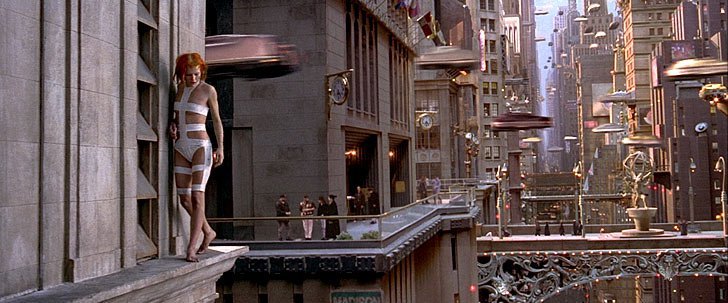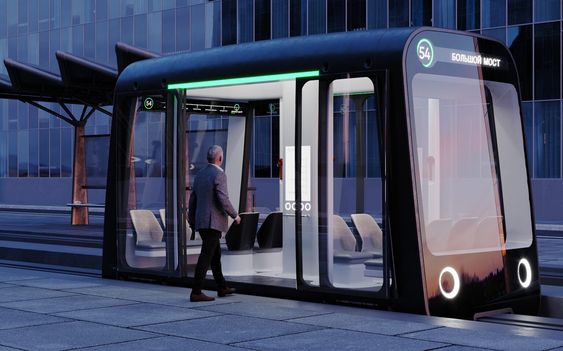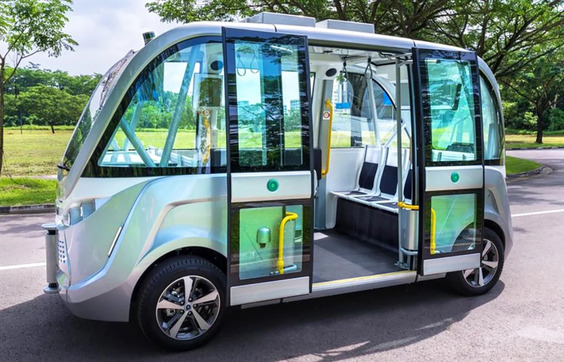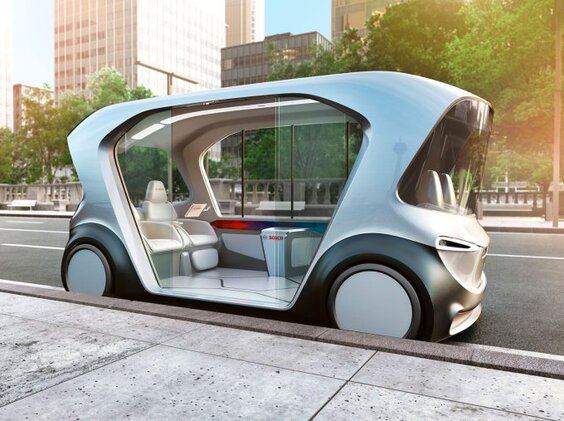
(source)
Translation provided by ChatGPT, link to the original article.
I recently published a series of articles titled 'As Cheap as a Bus, as Convenient as a Taxi...':
Link to Part 1: «Preliminary Analysis» (ру / eng )
Link to Part 2: «Experiments on a Torus» (ру / eng )
Link to Part 3: «Practically Significant Solutions» (ру / eng )
dedicated to making public transportation in large cities completely seamless, without the need for transfers. In the last article of the series, I extensively described a microbus movement scheme that allows them to operate almost like taxis while accommodating 5-10 passengers at once. Such a transportation system would enable city residents to travel from any intersection to another without any transfers, comparable in time to a personal car journey, and at a cost similar to a regular city bus ticket. However, the feedback from readers indicated that I chose an extremely ineffective way to convey the information, resulting in a failure to effectively communicate the essence of the matter.
I must admit that the previous three articles were written in a way that allowed readers to apply the acquired knowledge in practice or continue the research I started on their own. Unfortunately, my desire to 'teach' resulted in nearly 100 pages of complex mathematical text, which is clearly excessive for readers who simply wanted to familiarize themselves with the idea. Here, I will attempt to rectify this mistake and briefly, yet simply, explain the bus taxi technology.
Working Principle
Let's consider a square city model divided into blocks of size
For simplicity, we assume that the travel intensity of city residents from any point to any other point is the same. The simplest way to organize passenger transportation in such a city is to assign a separate bus route on each street with stops at every intersection. In total,
Using the routes of the simplest network, city residents will be able to travel from any stop to any other stop with just one transfer. Since the length of a street is proportional to
Is it possible to construct a bus route network in such a way that travelers can reach any intersection without transfers? Yes, it is possible. To build such a network, let's note that any two intersections in a grid city lie on at least two $\Gamma$-shaped routes: at least one that reaches the upper boundary of the city ('upper') and at least one that reaches the lower boundary ('lower'). If we deploy buses on all the upper $\Gamma$-shaped routes, we will have a completely transfer-free public transportation system. The problem, however, is that such a solution would be highly inefficient. To understand why, let's turn to the estimations:

(Fig. 2 'upper' and 'lower'
The number of upper
Two technological tricks allow increasing the average load of buses in the corner network: extending the interval
Let's first describe a typical journey along a corner route. When the stops are located on the same street, multiple corner routes compete for transporting passengers from the first stop to the second. However, if the stops are on different streets, there is only one such corner route. As a result, for sufficiently large
To understand how we can improve the efficiency of the non-transfer network, let's consider the period of time when a bus travels first along the horizontal side of the corner route
There can be two reasons for this:
a) There are simply too few stops on the horizontal side of
b) There are too few stops on the vertical side of
Why don't we try increasing the number of stops from which the buses of the corner route pick up or drop off passengers?
Let's modify the movement scheme as follows: instead of a

(Figure 3: The left side shows the "
Estimates of the average number of passengers in a bus corresponding to real city parameters
In the final section of article 3, I conducted model calculations attempting to take into account all the main reasons for time loss in traveling by bus taxi: the need to wait for a suitable bus, suboptimal joint route, acceleration and deceleration, turns at intersections, passenger boarding and alighting. As a constraint, I imposed the requirement that a typical bus taxi journey should not exceed one and a half times the duration of a similar trip by private car. For the sake of simplicity, these calculations assumed that real cities are grid-like and have a square shape. As a result, the following values were obtained for the average (normalized) bus occupancy,
For a hypothetical square-shaped New York (London, Moscow):
(in the corner zone of the corridor
For a hypothetical square-shaped Berlin:
(in the corner zone of the corridor
For a hypothetical square-shaped Paris:
(in the corner zone of the corridor
For a hypothetical square-shaped Prague:
(in the corner zone of the corridor
For a hypothetical standard square-shaped city with a population of half a million:
Population
density
(in the corner zone of the corridor
Desired Vehicle Concept
As the figures mentioned above demonstrate, a non-stop bus should have enough space to comfortably accommodate approximately 10 passengers. But don't think that these buses should resemble the stereotypical «marshrutka» (shared taxi). No, the plan is entirely different. Look, we have a decent speed, no transfers, quick arrival, and frequent bus stops. Let's not hesitate to add a sufficient level of comfort to these qualities, and we'll have a type of transportation that has every chance to compete with private cars. If that happens, there will be fewer cars on the streets, which means traffic jams will become a thing of the past, noise levels will decrease, and the air will become cleaner. Even those citizens who remain loyal to their private cars will benefit, as they will spend less time on the road and experience less stress.
So, we need a small, comfortable bus adapted for the role of urban public transportation. Are there any examples of such concepts in the world? In my opinion, there are, and among those that I've seen, I particularly liked the designs of buses developed as autonomous vehicles. Just take a look at the photos! Wouldn't you want public transportation in your city to look something like that?

(concept art from the internet, source not found)

(concept art, source: yankodesign.com)

(design project, source: coroflot.com/krassi_dimitrov2/Eolo)

(such a bus was promised to be launched in Singapore in 2022, source: bbc.com/news/business-42090987)

(design by Bosch, source: erticonetwork.com/bosch-presents-tomorrows-mobility-today/)

(design by Toyota, source: commons.wikimedia.org/wiki/File:Toyota_e-Palette_side.jpg)
My Grand Plans
I have extensively described my plans in the first chapter of this article, but here I will try to summarize them more briefly. In an ideal world, my work on the non-stop transportation project would likely conclude with the publication of the first three articles and a few consultations for a private R&D initiative that would immediately emerge for this project. However, the world is not perfect, and I'm afraid it's unlikely that something similar will happen in my lifetime unless I create that private R&D myself. On the other hand, it presents a good opportunity for me to understand how to organize the work of a large and diverse research group, and how to make the functioning of such a group profitable in the conditions of the modern economy.
I see the mission of the research group primarily in refining the existing conceptual solution to real traffic schemes within real cities. Pure mathematics will not be sufficient to achieve an industrially viable result. Economic and marketing research will likely be needed, as well as an understanding of the intricacies of city architecture and management. It will also require close collaboration with industrial designers from microbus manufacturing companies. As for the tasks of microbus production and passenger transportation organization, in my understanding, they should be left to the firms specializing in these areas.
The intended product of the proposed R&D, which should sustain its existence, is, in my opinion, the design of specific cities' public transportation networks (with potential buyers being city administrations and local passenger transportation operators). A slightly more innovative way for the research group to self-sustain could involve selling the right to scientific embassies to interested companies. The essence of such embassies lies in the fact that, for a relatively small fee, a third-party company can send some of its employees to join this research group. It is envisaged that the assigned employees would have full access to all ongoing and past developments and could even participate in research projects themselves. This scenario could serve as an interesting experimental model for commercial technology knowledge exchange and, in addition, would enable commercial firms to train their own research personnel.
What «tasty» offerings can I propose to investors?
By its nature, the proposed R&D project is not aimed at maximizing profits. However, I am willing to discuss the financial interests of those who support it from the start. It seems to me that, in addition to financial gain, there are many interesting strategic moves and intangible benefits to be gained here. For example, if I were to sit at a table with individuals for whom money is no longer a problem, I could surely sell them a way to significantly improve their reputation at a very favorable price. Being involved in positive changes in people's lives worldwide is an entirely different status than «partying with drunk girls on a plastic yacht».
Overall, I don't have many points with a fundamental position, and I am open to reasonable criticism, advice, and proposals. If you have any, you can send them to my email: magnolia@bk.ru.
Sergey Kovalenko
June 2023 🎶
Link to Part 1: «Preliminary Analysis» (ру / eng )
Link to Part 2: «Experiments on a Torus» (ру / eng )
Link to Part 3: «Practically Significant Solutions» (ру / eng )
Link to «Summary» (ру / eng )